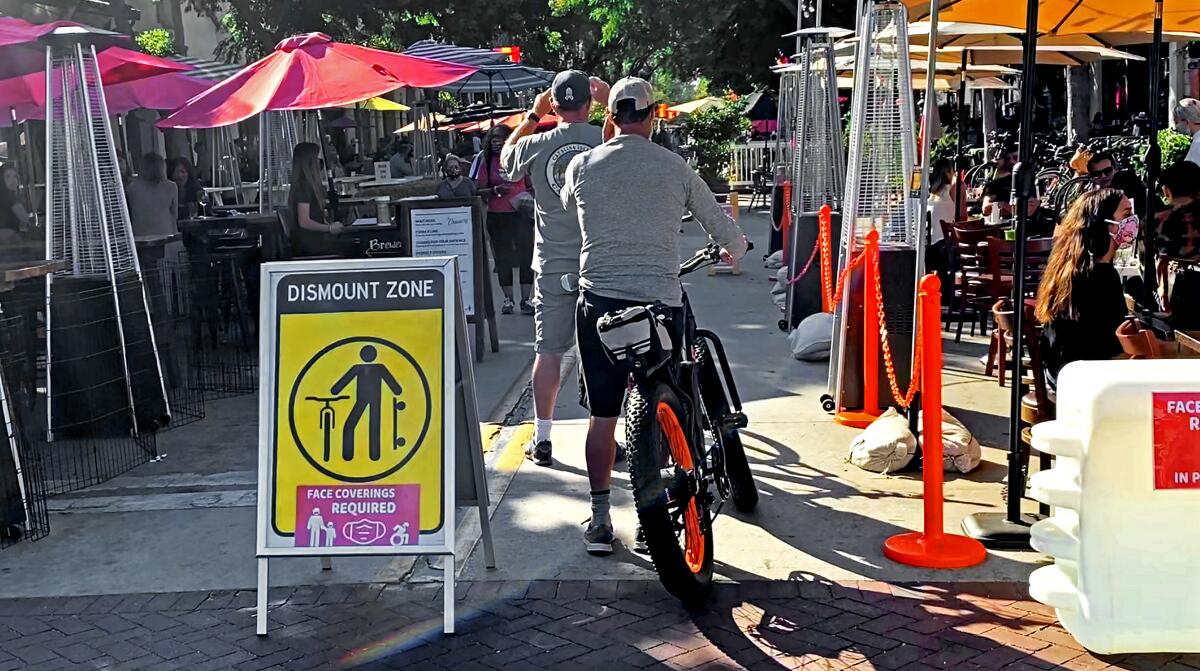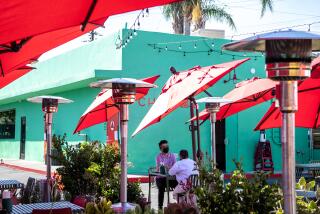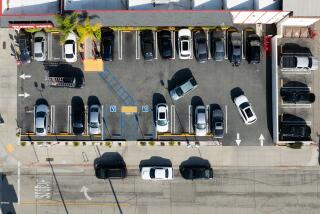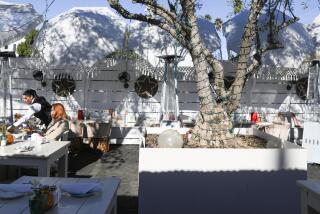Editorial: After the pandemic, outdoor dining and ‘slow streets’ should live on

Here’s one pandemic change that should become a permanent fixture in the urban landscape: Let’s keep the “slow streets,” parklets, temporary bike lanes and outdoor dining areas that have sprung up in cities across the country, rather than return every inch of asphalt to motor vehicles.
One of the bright spots of the last year has been cities’ willingness to swiftly transform the public realm into open-air spaces that can be used by people to safely gather, exercise and dine with social distancing.
Oakland, San Francisco and many other cities launched slow-streets programs to close some routes to through traffic so people could bike, walk and play in the roadways without fear of getting hit by a speeding car. In Los Angeles, the city added 50 miles of slow streets in 30 neighborhoods. There was so much more demand from neighborhood groups than funding to run the program that the Department of Transportation had to stop adding new routes.
New York City, Boston and Austin, Texas, went further, claiming street space for temporary protected bike lanes in response to the huge boom in bicycle sales and demand for safer cycling routes. Minneapolis and St. Paul, Minn., closed off portions of roads near parks and lakes so people could safely enjoy the outdoors.
And many cities chose to turn curbside parking spaces and sidewalks into alfresco dining spots so restaurants — still operating under COVID limitations on indoor dining — could stay open. Some cities closed off blocks of streets so restaurants and cafes could have even more space for tables.
Sure, it was a pretty easy decision to cordon off some streets and parking spaces in the first months of the pandemic, when many businesses were shuttered, commercial districts looked like ghost towns and people were stuck at home, trying to flatten the curve. But now, as life returns to some semblance of normality with traffic and commerce on the rise, too many cities are planning to revert to the old car-centric way of managing public spaces.
A survey of 130 mayors across the country by Boston University found that although many cities repurposed public spaces during the pandemic, few mayors intend to make the changes permanent. There was some interest in continuing alfresco dining, with a little over one-third of mayors saying they would keep those changes in place.
But limiting traffic on roads for safe walking and biking, or closing street lanes for recreation? Most mayors said those changes would not be made permanent, even though two-thirds of mayors said they expect residents will walk and bike more frequently after COVID-19 is under control. So, where are all those people supposed to walk and bike safely?
That’s a missed opportunity. Even before the pandemic, there was a growing recognition that public spaces are too oriented toward cars, and that’s created a vicious cycle. It hurts the quality of life in neighborhoods by making residents feel unsafe and uninspired to walk, bicycle or take transit. It discourages people from getting out of their cars, which makes it harder to cut the greenhouse gas emissions responsible for climate change.
And with so much of the public realm committed to cars, there is less room for the parks and recreational space that people are clamoring for. Paris created mini-parks, wider sidewalks and many miles of bike lanes by reclaiming some streets and parking spaces from cars. It didn’t require a major reengineering of the city; it just took the political will to prioritize people over personal vehicles.
Now, it won’t be as easy to make these pandemic-inspired streetscape changes permanent. There will be trade-offs — the restaurants that benefit from alfresco dining will have to give up street parking for their customers. Drivers may be inconvenienced if their desired route is closed for a slow street. These transformations take consistent public funding for maintenance and ongoing community engagement and partnership in order to make them successful.
The pandemic showed us what’s possible. We can take away street lanes and parking spots to create lively, communal open spaces. We can dine outside, under the stars. We can walk, bike and scoot more safely. We can allow kids to ride and play in the public realm with confidence. Let’s not roll back progress toward safer, healthier cities.
More to Read
A cure for the common opinion
Get thought-provoking perspectives with our weekly newsletter.
You may occasionally receive promotional content from the Los Angeles Times.










